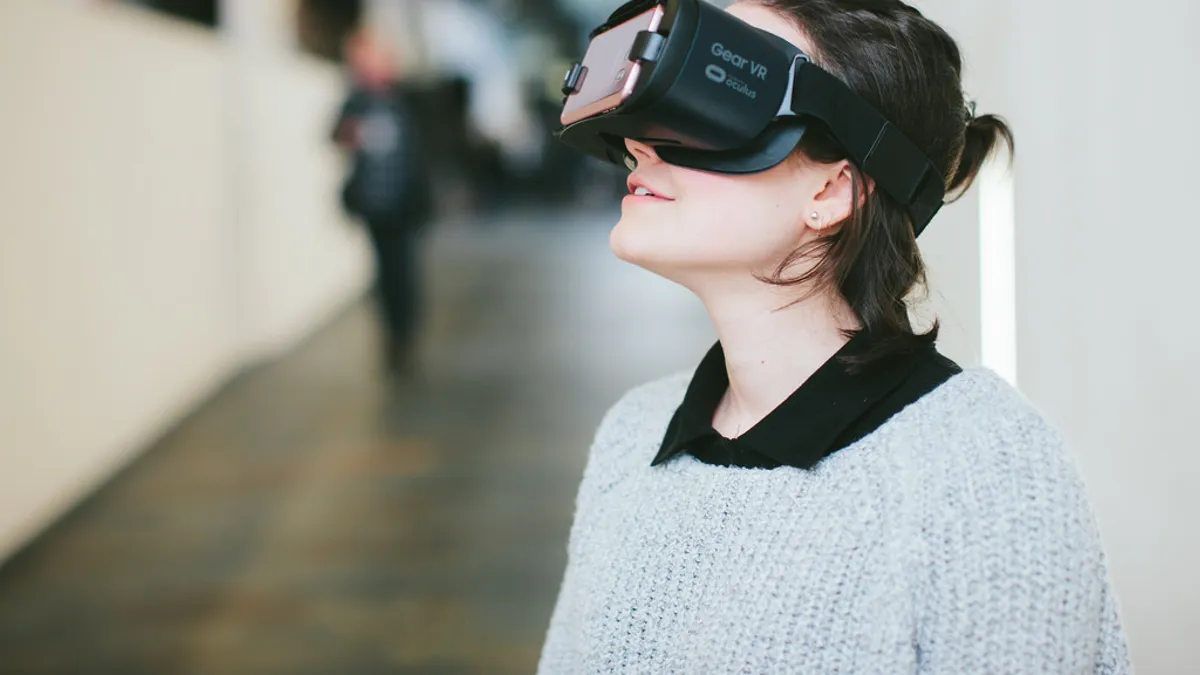If your warehouse isn't on the wearable bandwagon, expect to jump on soon: MHI expects 70% of facilities to adopt wearables in the next five years.
Wearables don’t necessarily mean the latest GPS watch you’ll wear while marathon training. It could be as simple as a barcode scanner that eliminates the need for manual data entry, or as complex as smart glasses that identify what exactly a person should pick through augmented reality.
And while adoption rates seem to be high, it’s something that companies are doing in stages.
"It’s a journey, not a destination, especially for large companies," Bill McBeath, chief research officer at ChainLink Research, told Supply Chain Dive. "Companies that are further along, they’ve realized all kinds of benefits, adding that it’s not really an option anymore for companies that want to stay competitive."
"If your competitors are doing all of that and you’re still sitting on your 20th century manual way of doing things, they’re going to have a big advantage," he said.
One less step, far fewer errors
For manywarehouses, just using a wearable to eliminate a step of manual data entry has made a huge difference, said McBeath, because those mistakes can carry on down the line, and spread.
"By scanning the bar code, the system can tell you, ‘wait a minute that’s the wrong item or the wrong number of items," he said. Just getting to that stage can make a huge difference to some companies that are used to operating manually when it comes to conducting inventory audits or tracking their product and processes.
And while this might seem like a basic technology application, it’s also where a lot of growth lies — wearable scanner shipments are expected to reach nearly 22 million units by 2021.
Where wearables help most
The time it takes to pick something up and put it down may not make a difference for big things that are picked a few times a day, Don White, vice president of solutions at Snapfulfil, told Supply Chain Dive, but it does when the picks go into the thousands.
"The wearables trend tends to fit anything where folks are either grasping a lot of small things or they’re grabbing one or two big things and they need two hands to maneuver that inventory," he said.
The return on investment (ROI) on a wearable-inclusive system is much higher for those higher frequency picks. "If you’re using an older model and it takes me 20 seconds to scan something and put a device away to move the thing, you’ve really only lost 20 seconds over 20 picks a day," he said for warehouses that might handle bigger ticket items but not that many in one day. "If you lose those same 20 seconds in an e-commerce plan and it’s 7,000 picks a day, it’s a lot," he said.
Voice recognition within a wearable is becoming standard, said White, who also predicts glasses will be the next big thing, especially those that take advantage of new augmented reality technology. "It’s lots of delivery of text on your lens and laying over a picture of the product that you’re supposed to be picking," he said. He sees this as being a growth area as the glasses get better, and the cost of the glasses come down.
Amazon also recently secured two patents for wristbands that would track employee movement and direct the picking process without barcodes — and nudge workers who are not up to speed.
Taking the grunt work out
There has been pushback on the Amazon news about workers being tracked that minutely, though. In a post for DC Velocity, White wrote the pros outweigh the possible cons. "More information about resource performance is always valuable in fine-tuning warehouse processes and inventory management, and these wearables could save employees time and effort as they move through the warehouse," he wrote there.
McBeath said these kinds of tracking devices to be a key in unlocking employee potential. Wearables can track work flows and identify where a task might be better fit for AI than a human.
"It allows for the automation of a lot of the grunt work," McBeath said. "Some people enjoy it, but most people don’t. Those can be done by machines now and people can be freed up to do more creative things that require human intelligence.













